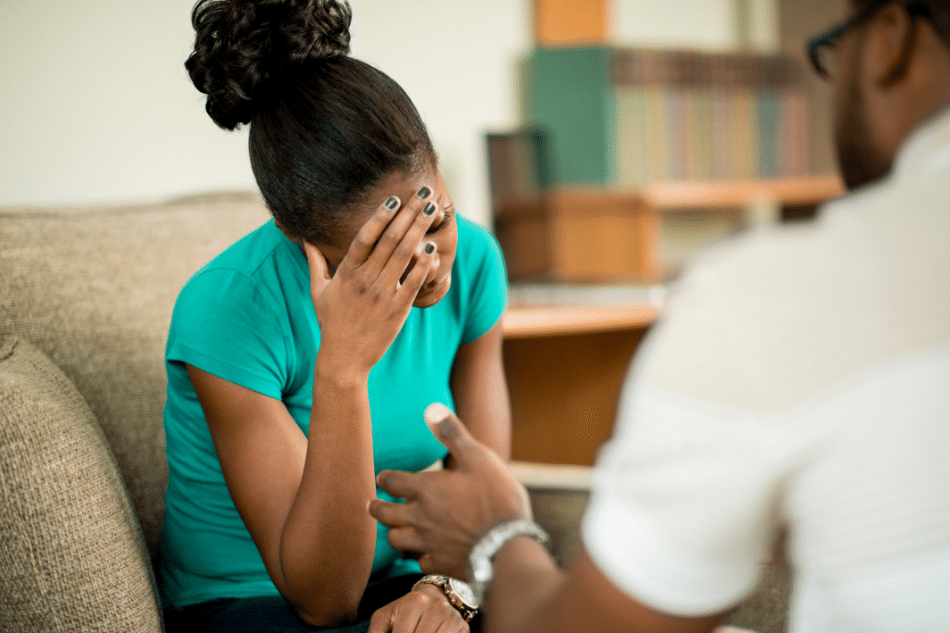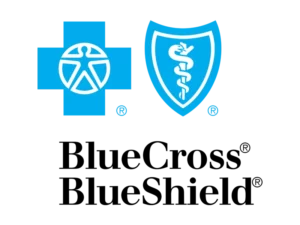Light Therapy for Seasonal Affective Disorder in Teens (And Other Treatments)

When people think about treatment for mental health, it might be easy to assume it works the same way as treatment for physical problems. For example, if a wound gets infected, a round of antibiotics usually sorts it out. Simple: one pill, one fix. Mental health treatment, though, rarely works this way.
If you’ve been diagnosed with seasonal affective disorder (SAD), you’ve probably been given a list of different treatment options rather than one neat solution. So, you might be feeling confused about why there are so many, or which one is the right fit for you.
A mental health professional can discuss your symptoms and circumstances and talk you through treatments for seasonal affective disorder in teens. This page can also help you better understand your treatment options, as it walks you through:
- Understanding light therapy for SAD
- How light therapy works for SAD
- The first-line treatments for teens with SAD
- If light therapy works for summer-pattern SAD
- What to do if treatment for SAD isn’t effective
- Where you can find extra help for SAD

What Is Light Therapy?
When winter starts to creep in, it can feel like your body clock slips out of sync. In fact, this clock, called your “circadian rhythm,” is already running late during your teenage years.1 This may be why staying up into the night feels easier than getting up for school in the morning.
This mismatch between your body clock and the beginning of a school day is why SAD often feels as though it hits harder for teens in the winter months. You’re already exhausted, and now you’ve got to go to school, learn, study, maintain friendships, and do homework in the dark winter evenings. It’s a lot to deal with.
But there is one therapy, amongst a whole range of treatment options, that has been shown to help with the symptoms of SAD: Light therapy.
Light therapy is exactly what it sounds like: treatment through light. A small device, usually a light box with fluorescent or LED bulbs, is used for this purpose. These boxes are designed with diffusion screens so the light spreads evenly, creating brightness without the harsh glare that can strain your eyes.
The strength of the light is measured in “lux,” which is basically how bright it feels to your eyes. For treatment for seasonal affective disorder in teens, the standard is 10,000 lux, which is about the same as being outside in full daylight.2 To get the full benefits, the following are rough guidelines that you should follow.3
Light Therapy Guidelines:
- Sit in front of the light box for around 30 minutes.
- Angle the box slightly to the side, about 30 degrees off your direct line of sight. Experts recommend this technique, as doing it this way allows the glow to reach your eyes while you do something else nearby, like eating breakfast or scrolling through your phone.
- Stay between 12 and 24 inches away from the device. While this is the recommended distance, the exact amount will likely depend on the device.
- Use the device in the morning, as treatment at this time of day tends to be most effective. The light therapy sends a literal wake-up call to your body and lets it know it’s time to get into gear.
- Adapt your approach to your needs. For example, there are slightly different variations of the lightbox, like dawn simulators that slowly brighten your room upon waking. Plus, evening sessions might work best for people who don’t struggle with mornings. These approaches can help in some cases, but they’re generally not thought to be as effective as the standard morning routine with a light box.
Above all, consistency is key. Sticking with light therapy every day gives it the best chance to work, and many people notice a lift in SAD symptoms within a couple of weeks.4
Is Light Therapy the First Line of Treatment?
Light therapy is often one of the first tools doctors suggest, but it usually works best as part of a bigger game plan. Think of light therapy like being a player on a strong sports team: an integral part of a winning formula, but not as effective when performing solo. In other words, when light therapy is paired with other forms of support, the chances of staying steady during winter tend to be much higher.
Treatments that can be paired with light therapy include:
CBT-SAD
CBT is a type of talk therapy that helps you challenge negative thought patterns. When it’s adapted for SAD, the focus is on the winter-specific thoughts that can drag your mood down. For example, worrying about how cold it is outside, or stressing over Christmas costs when money’s tight, can only make things feel heavier. With CBT-SAD, these thought loops are spotted and worked through, with the aim of swapping them for thoughts that feel lighter and more useful.
In fact, studies show CBT-SAD can be just as effective as light therapy.5 It’s also often even better in the long run, since it can lower your chances of slipping back into the same negative patterns next winter. Therefore, it’s used as both a preventative and an in-the-moment type of treatment.
Antidepressants
Sometimes, if SAD symptoms are so strong that therapy and light alone don’t bring enough relief, doctors may recommend medications. Most antidepressants given for depression are SSRIs, which mainly adjust serotonin levels to boost mood, but with SAD, doctors often look at a different medication called bupropion.6 Because bupropion targets dopamine and norepinephrine, the brain chemicals tied to motivation and energy, this medication is often a better fit for the sluggish, drained feeling that comes with SAD. It’s also the only medication officially approved to prevent SAD, meaning that if you have a history of SAD, doctors can prescribe it early as a preventative measure.
Remember, though, taking antidepressants isn’t something you do on your own. Just because they may have worked for your friends or family members, it doesn’t mean they’re suitable for you. A doctor will talk through whether medication is the right fit for your personal situation, including possible side effects and what to expect.
Are There Other Treatment Options for SAD?
Melatonin
Melatonin is the hormone that tells your body it’s time to sleep. If you’re suffering from SAD, your body clock often slips, and melatonin rises later than it should. Therefore, some studies suggest melatonin supplements could help SAD,7 while others don’t show much difference in symptoms after taking them.8 Because the research is mixed and melatonin can affect your sleep-wake cycle directly, supplementation is only something to try with guidance from a doctor..St. John’s Wort
This herbal supplement has frequently been used for mild depression in the past, and some people have tried it for SAD. The research, though, is outdated and hasn’t been revisited much in recent years. On top of this, St. John’s Wort can seriously interact with other medications,9 so it’s not something to experiment with without a doctor’s advice.Lifestyle changes
Lifestyle changes may not sound exciting, but basics like eating well, getting outside for movement, keeping your sleep routine steady, and staying socially connected really can help. Think of these steps as daily deposits into your “mood bank.” Each “deposit” feels small, but over time, they can add up and give you a stronger base from which to handle the winter dip.Negative ion therapy
This form of therapy might sound like something out of a Marvel movie. However, research has looked at whether negative ions (tiny charged particles found near waterfalls or during storms) could improve mood. Some people with depression notice benefits from ion-generating devices, but the evidence is still inconclusive.10 Right now, it’s more of an experimental option than a go-to treatment.Do These Types of Therapies Apply to Summer-Pattern SAD?
By now, you might be wondering if we’ve forgotten about summer-pattern SAD, especially if you’re someone who struggles with it. While winter-pattern SAD gets most of the attention, summer-pattern SAD is real and not something that should be overlooked.11 Instead of the dark months weighing you down, it’s the long, hot, and bright days that throw everything out of balance.
In summer-pattern SAD, sleep disturbances come from insomnia.11 This can also come with a dip in appetite, a constant feeling of restlessness, and, in some cases, increased anxiety.11 Plus, in rare cases, summer SAD has been linked to sudden mood swings that can spill over into aggressive outbursts.
Because these symptoms swing in the opposite direction to those of winter SAD, the treatment approaches also look different. For people with summer SAD, light boxes and melatonin aren’t the go-to; instead, treatment follows the same process used for standard depression. This often means therapy, medication, or both.11
In the same vein of thought, CBT-SAD isn’t used for summer symptoms. However, standardized CBT can still help by giving you ways to manage racing thoughts and mood swings brought on by the change in season.
So, while summer SAD does differ in treatment styles from the winter form, it’s still recognized and supported. Although it may feel challenging and like it doesn’t get the same representation as winter SAD, with the right help, you can manage it and stop it from taking over.
I’m Not Coping Well With SAD Treatments – What Can I Do?
Sometimes you can do all the right things and still may feel as though SAD is winning. This doesn’t mean you’ve failed or that nothing will ever help; rather, it could mean that your current approach isn’t the right fit for you.
For teens, the pressure to “just get on with it” can be strong, but bottling it up usually makes things worse. If you feel like you’re sliding deeper into SAD, even with treatment, the best move is to speak up. Talk to a parent, family members, a trusted teacher, or a school counselor about how rough things still feel. Letting someone else in means you don’t have to figure it out alone, and it opens the door to trying other options.
SAD doesn’t always shift right away, and sometimes it takes a mix of treatments or a change in approach before things click. What matters most is recognizing when you’re not coping and asking for more support. This step alone can be the difference between barely making it through the season and finding a way to actually feel better.

Mission Prep: Support for Teens Dealing With SAD
At Mission Prep, we understand how the seasons can weigh on you. Dark mornings and early nights can drain your energy and make even simple things, like focusing on school or staying connected with friends, feel harder than they should. We can help teens steady their emotions during these months and find a way back to balance.
Our therapists use CBT to break down the heavy thoughts that often come with winter and DBT to manage the emotional swings that can follow tiredness and low mood. For teens who feel cut off or stuck in unhelpful routines, we focus on rebuilding daily structure in our safe and supportive locations across the US.
Some teens benefit from inpatient care where they can step away from seasonal stress, while others make progress in outpatient or short-term programs. Whatever the setting, we build the support around your needs.
If you’re ready to stop feeling like winter is running the show and start moving toward a steadier life, reach out today. We’re here to help.
Frequently Asked Questions About SAD Treatment
While we hope this article covered all the bases on treatment for seasonal affective disorder in teens, you may still have some concerns or questions. This is why we’ve provided responses to FAQs about SAD.
What Is Seasonal Affective Disorder in Teens?
Seasonal affective disorder in teens is a form of depression that appears during certain seasons, most often winter. It can cause low mood, tiredness, poor concentration, and difficulty enjoying usual activities.
What Is the Most Effective Treatment for Seasonal Affective Disorder?
The most effective treatment for seasonal affective disorder is considered to be light therapy. Sitting near a 10,000 lux light box each morning can help reset the body’s internal clock, improving mood and reducing tiredness over time. However, this is often best paired with psychotherapy.
What Is the Treatment of Choice for Seasonal Pattern Disorder?
As with treatment for SAD, the treatment of choice for seasonal pattern disorder is bright light therapy. Doctors often recommend this approach first, though it can also be paired with therapies like CBT or antidepressants for longer-lasting benefits.
References
- DePoy, L. M., Vadnie, C. A., Petersen, K. A., Scott, M. R., Zong, W., Yin, R., Matthaei, R. C., Anaya, F. J., Kampe, C. I., Tseng, G. C., & McClung, C. A. (2024). Adolescent circadian rhythm disruption increases reward and risk-taking. Frontiers in Neuroscience, 18. https://doi.org/10.3389/fnins.2024.1478508
- Psychiatry. (2025). How should I obtain a light box? Yale School of Medicine. https://medicine.yale.edu/psychiatry/research/clinics-and-programs/winter-depression/obtain/
- Campbell, P. D., Miller, A. M., & Woesner, M. E. (2017). Bright light therapy: Seasonal affective disorder and beyond. The Einstein Journal of Biology and Medicine: EJBM, 32, E13–E25. https://pmc.ncbi.nlm.nih.gov/articles/PMC6746555/
- Sher, L., Matthews, J. R., Turner, E. H., Postolache, T. T., Katz, K. S., & Rosenthal, N. E. (2001). Early response to light therapy partially predicts long-term antidepressant effects in patients with seasonal affective disorder. Journal of Psychiatry and Neuroscience, 26(4), 336. https://pmc.ncbi.nlm.nih.gov/articles/PMC167188/
- Rohan, K. J., Mahon, J. N., Evans, M., Ho, S.-Y., Meyerhoff, J., Postolache, T. T., & Vacek, P. M. (2015). Randomized trial of cognitive-behavioral therapy versus light therapy for seasonal affective disorder: Acute outcomes. American Journal of Psychiatry, 172(9), 862–869. https://doi.org/10.1176/appi.ajp.2015.14101293
- Gartlehner, G., Nussbaumer-Streit, B., Gaynes, B. N., Forneris, C. A., Morgan, L. C., Greenblatt, A., Wipplinger, J., Lux, L. J., Van Noord, M. G., & Winkler, D. (2019). Second-generation antidepressants for preventing seasonal affective disorder in adults. The Cochrane Database of Systematic Reviews, 3, CD011268. https://doi.org/10.1002/14651858.CD011268.pub3
- Rosenthal, N. E., Sack, D. A., Jacobsen, F. M., James, S. P., Parry, B. L., Arendt, J., Tamarkin, L., & Wehr, T. A. (1986). Melatonin in seasonal affective disorder and phototherapy. Journal of Neural Transmission. Supplementum, 21, 257–267. https://pubmed.ncbi.nlm.nih.gov/3462335/
- Wirz-Justice, A., Graw, P., Kräuchi, K., Gisin, B., Arendt, J., Aldhous, M., & Pöldinger, W. (2002). Morning or night-time melatonin is ineffective in seasonal affective disorder. Journal of Psychiatric Research, 24(2), 129–137. https://doi.org/10.1016/0022-3956(90)90053-S
- Bruce, D. F. (2023, July 17). St. John’s wort for treating depression. WebMD. https://www.webmd.com/depression/st-johns-wort
- Terman, M., & Terman, J. S. (1995). Treatment of seasonal affective disorder with a high-output negative ionizer. The Journal of Alternative and Complementary Medicine, 1(1), 87–92. https://doi.org/10.1089/acm.1995.1.87
- Ibrahim, M., Hassam, S., Shahid, I., & Malik, M. H. (2025). A case report of summer seasonal affective disorder: An underrecognized condition in tropical regions. Innovations in Clinical Neuroscience, 22(1–3), 51. https://pmc.ncbi.nlm.nih.gov/articles/PMC11980904/













